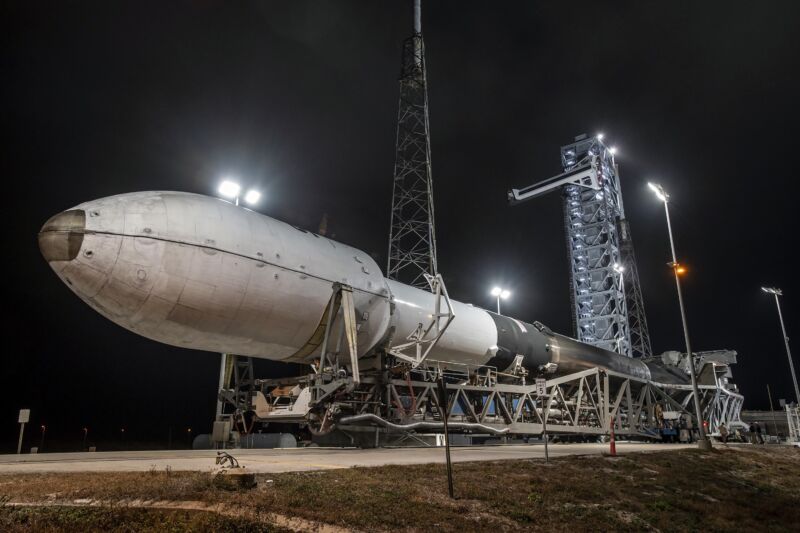
Amazon announced Friday that it has purchased three Falcon 9 rocket launches from SpaceX beginning in mid-2025 to help deploy the retail giant’s network of Kuiper Internet satellites.
In a statement, Amazon said the SpaceX launches will furnish “additional capacity” to “supplement existing launch contracts to maintain Project Kuiper’s satellite deployment arrange.” SpaceX has its own broadband satellite fleet, with more than 5,100 Starlink spacecraft currently in orbit, making it a competitor with Amazon.
Last year, Amazon bought up most of the Western world’s excess launch capacity from everyone but SpaceX, securing 68 rocket flights from United Launch Alliance, Arianespace, and Blue Origin to deploy thousands of satellites for the Kuiper broadband network. Amazon previously contracted with ULA for nine Atlas V launches to maintain the initial series of Kuiper launches, the first of which lifted off in October with Amazon’s first two Kuiper prototype satellites. More Atlas Vs will start launching operational Kuiper satellites next year.
SpaceX’s Falcon 9 rocket, the world’s most reliable launch vehicle in active service, was left out of Amazon’s multibillion-dollar rocket purchase. This led to a lawsuit filed in August by shareholders of a pension fund that includes Amazon stock. The suit claims Amazon, its founder Jeff Bezos, and its board of directors breached “their fiduciary duty” and failed to consider SpaceX during the launch service procurement.
The Falcon 9 rocket is the only rocket with any openings in its launch arrange that could make up a shortfall from delays caused by Amazon’s other launch providers. SpaceX has launched 88 Falcon 9 or Falcon Heavy rockets so far this year and aims to boost the launch cadence to one flight every 2.5 days in 2024. Most of these launches are for SpaceX’s own Starlink Internet network.
But the plaintiffs in the lawsuit allege that Amazon didn’t consider the Falcon 9 rocket last year due to an intense and personal rivalry between Elon Musk, SpaceX’s founder, and Bezos. That rivalry, it appears, has been eclipsed by the cold reality that Amazon needs some help from SpaceX.
A deadline looms
In its first-generation architecture, Amazon’s Kuiper network will consist of 3,236 satellites flying in low-Earth orbit at an altitude of less than 400 miles, providing broadband service to customers across most of the populated world.
The company needs to deploy half of these satellites by July 2026, a deadline to preserve network authorization from the Federal Communications Commission. That would necessitate an average pace of at least two launches per month from Amazon’s stable of launch service providers beginning next year. Each launch will add several dozen operational Kuiper satellites on a single mission. Exact numbers will depend on the rocket’s lift capacity.
Aside from the Atlas V, which Amazon will lean on to launch its first batches of satellites, none of the rockets needed to deploy the Kuiper network have flown. Production of Atlas V rockets is winding down, and there are no more of those for Amazon to buy.
The Vulcan rocket, contracted for 38 Kuiper launches, is scheduled to launch on its first assess flight on December 24 from Cape Canaveral, Florida. Europe’s Ariane 6 rocket, which Amazon plans to use 18 times, is scheduled for its inaugural launch in mid-2024. The New Glenn from Blue Origin, owned by Amazon founder Jeff Bezos, might be ready to debut toward the end of 2024. Amazon has booked 12 New Glenn missions, with a contract option for 15 more.
Assuming all these rockets fly successfully on their current schedules, ULA, Arianespace, and Blue Origin will need to rapidly ramp up their launch rates to confront Amazon’s demand. The most pressure will be on ULA with its Vulcan rocket.

